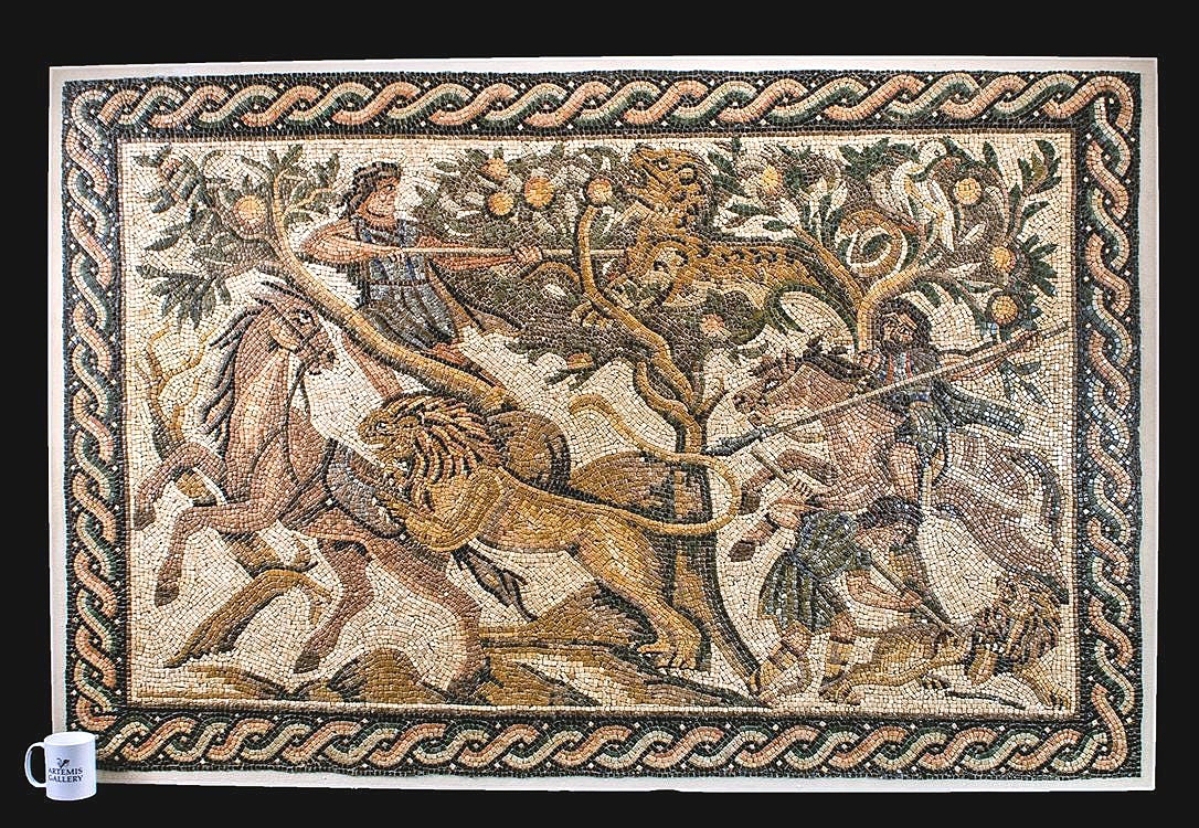LOUISVILLE, COLO. – Measuring about 48½ by 74 inches, a Roman stone mosaic with a hunting scene sold for $118,275 at Artemis Gallery’s February 18 sale. The mosaic, depicting a dramatic hunting scene, dated to the Imperial period from the First to Third Century CE. One hunter is seen on horseback about to spear a lion that is attacking a horse; one hunter is on foot spearing another lion; and the third hunter has climbed a fruit tree at center of the mosaic where he spears a tiger up in the branches.
The auction house wrote, “Mosaics (opus tesellatum) are some of our enduring images from the Roman world, not only for their aesthetic beauty, but also because they reveal what Romans chose to depict and see every day decorating their private and public spaces. This piece at first glance seems quite simple – men hunting wild felines – two lions and a tiger – in the wild. However, the symbolism of the iconography is layered and rich. In the classical world, lions symbolized power, wealth and might. They were famously featured in many ancient myths, perhaps the most famous being that of Hercules (Greek Herakles) slaying the Nemean lion for his first labor. The lions’ fur was believed to be impenetrable to attacks, since according to legend it was made of gold and its claws were far sharper than swords with the power to slice through armor. In the end, Hercules defeated the lion by strangling it and wore its skin. Lions were also favorite iconography for buildings, coins and statues. Examples include the Lion Gate to the Citadel of Mycenae, the Terrace of the Lions on the island of Delos, and the lion hunt mosaic from Pella featuring Alexander engaged in a lion hunt. Of course lions were also the stars of Roman arenas where they would fight other animals, such as tigers and bears.”
The mosaic had provenance to the David Leibert collection and to gallery Phoenicia Holyland Antiquities.
Watch for a full review in a future issue.





